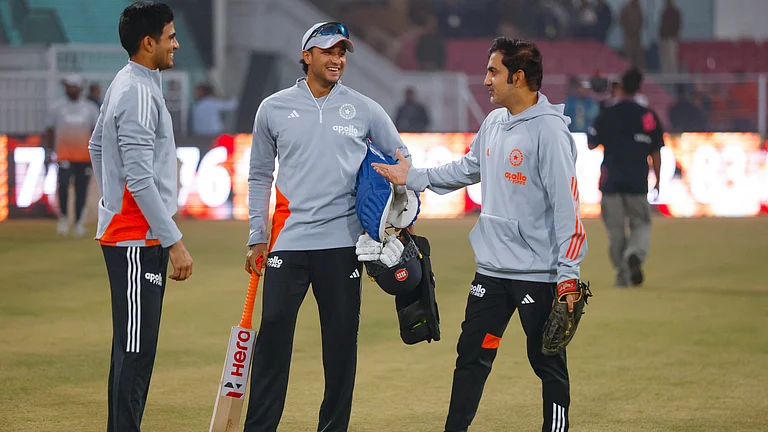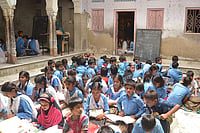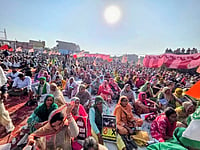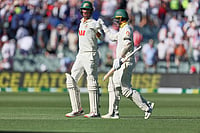Though there were stars aplenty at the Jaipur Literary Festival, the power couple of the event certainly were Orhan Pamuk and his Bookered lady love. But now that the celebrity gossip has abated—and also the accompanying acrimony that was always beside the point, whatever the point is, or was—it is time to attend to the substantial reflection on the art and craft of the novel that Pamuk’s publishers shrewdly decided to release after the Jaipur mela: The Naive and the Sentimental Novelist. Pamuk is a thoughtful and insightful guide to the mysteries of narrative. And as a practising novelist of distinction, he speaks with a becoming mixture of authority and modesty—unlike, may one say, the eunuchs in the harem, who can’t actually do it, but know all about how it’s done, and can be done better.
As befits a work by a master of narrative, even this discursive exercise— Pamuk’s Charles Eliot Norton lectures, delivered at Harvard in 2009—is structured around a mystery. From the very outset, even as he talks about the nuts and bolts of narrative, Pamuk alludes repeatedly to something that he calls “the novel’s secret centre”, the elusive underpinning that in a deep Hopkinsian sense, informs the detail and renders it meaningful, but is itself everywhere and nowhere. The mystery is revealed—or half-revealed, as through a glass darkly—in a final section entitled ‘The Centre’: “The center of the novel is like a light whose source remains ambiguous but which nonetheless illuminates the whole forest—every tree, every path, the clearings we have left behind, the glades we are heading towards, the thorny bushes, and the darkest, most impenetrable undergrowth.” This comprehensive “meaningfulness” is, as it happens, a very curious phenomenon. In the everyday world, if anyone were to construe every little gesture or fact as meaningful, they would soon find themselves in an asylum. In the novel, however, except in self-consciously gamey, postmodern varieties, which are in any case playing against this available convention, the pointless detail is a breach of novelistic trust.
Pamuk’s abandoned career as a painter contributes another significant strand to his argument about the novel. He reflects, variously, on the manner in which novelists seek to replicate, through words, the more direct forms of representing reality available to painters. As a sometime painter—and a novelist whose breakthrough novel on the world (ie English) stage was My Name Is Red—Pamuk is inclined to think of novelists’ dependence on words as a handicap. Thus, he writes insightfully about the stratagems that novelists must employ in order to engage the reader’s imagination, because it is only through that imaginary activity that the novel’s world—and, come to think of it, the world, too—becomes “real”.
However, perhaps Pamuk underestimates the significance of the involvement—even complicity—which the imaginative engagement produces. I remember a class in which I screened Ray’s film of Ghare Baire after first having taught the text. The students’ disappointment was visible—even audible—as the class of mainly male adolescents was forced, by the necessary specificity of cinema, to adjust to a single, solid, shared Bimala—instead of the many Bimalas that had been previously imagined! Of course, this business of engagement and complicity plays differently in what Pamuk identifies frankly as “poor non-Western countries”. Indeed, a significant aspect of Pamuk’s book is his insistence on introducing the specificity of the “non-Western” into the discourse. After all, if we won’t think about our own cultural predicaments, who will? Or will it always be celebrity gossip—and fantastic advances?
Thus, there is a considerable debate in the West about the question of the “truth” of narrative, and so of fiction. However, in our contexts—whether of verbal or filmic narratives—the matter of their “truth” is not only a subject of controversy, it is also a cause of actual violence and devotion, as evidenced most spectacularly, I suppose, by the role that the superstars play in the South. It is rather more difficult to focus on the fictionality, the narrative intermediation, the devices whereby the thought machine is constructed. The line between fiction and reality is easily blurred, frequently forgotten—as anyone trying to make a film exploring Shivaji’s adolescence, for example, will soon discover! It is here that one needs help in shedding what Pamuk, after Schiller, identifies as naivete, and becoming, in this special sense, self-conscious and analytical—or, in a word, sentimental.


























